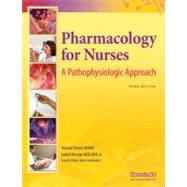Effectively learning pharmacology requires students to clearly see the connection between pharmacology, disease and patient care. Pharmacology for Nurses, 3e i(this is the standalone book) is structured to present pharmacology and pathology together, so students can more easily grasp the interrelationship between these subjects and provide a holistic perspective to patient care.
A prototype approach, easy to follow presentation and extensive pedagogical aids enable students to understand key concepts and apply essential components of nursing care to drug therapy.
Pasco-Hernando Community College, New Port Richey, FL. Workbook provides a guide to learning and applying key concepts and procedures from the textbook profiled 2010-16. Features matching exercises, fill-in-the-blank activities, and dosage calculation problems. For student nurses. Three-hole punched with perforated pages.








